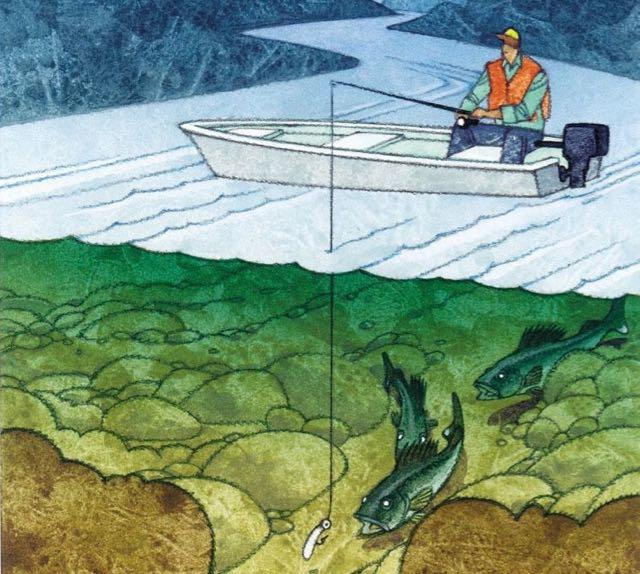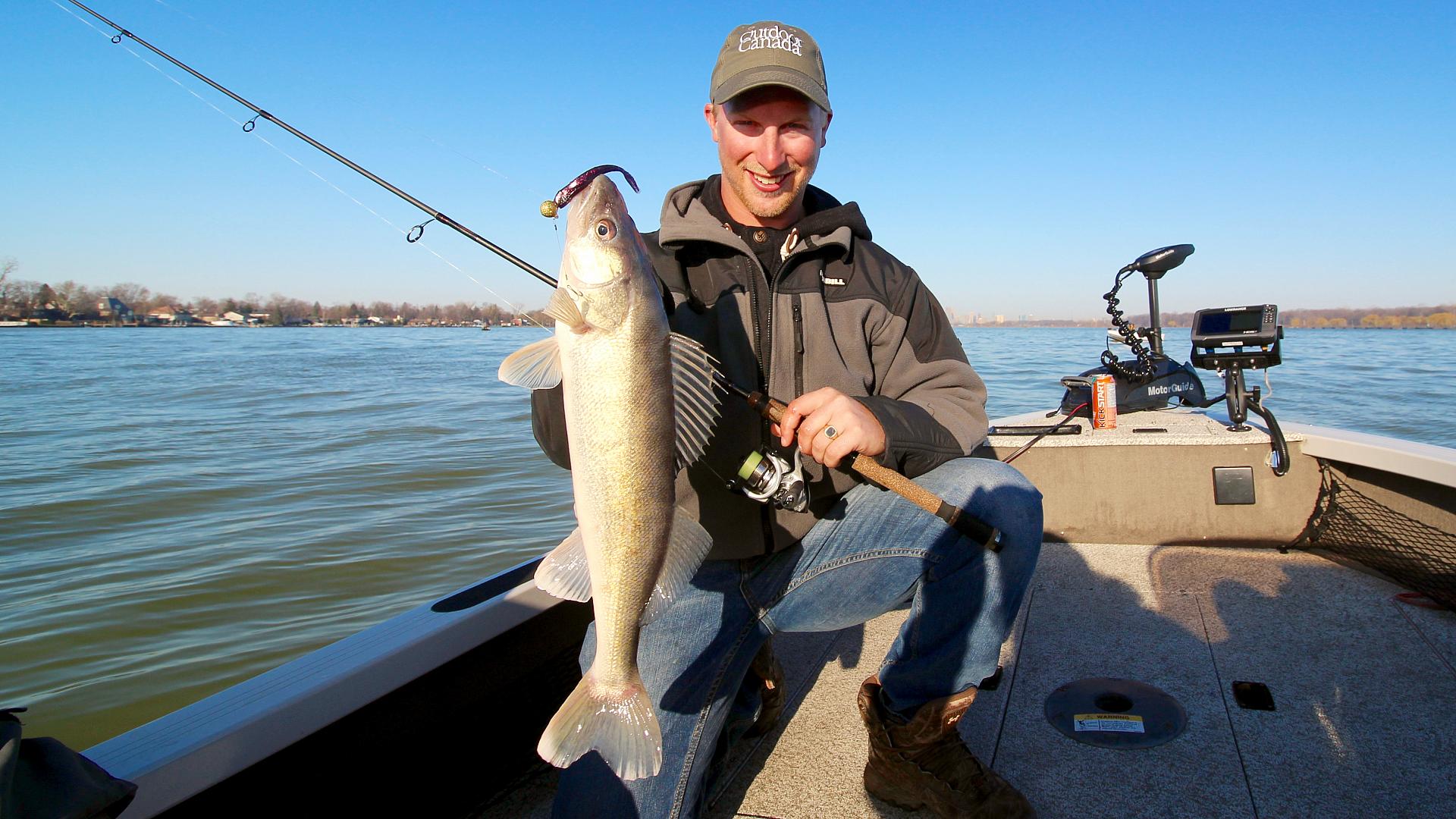Walleye jigging secrets
Gord Pyzer's all-time top 5 jig tactics for walleye
Advertisement
3. Go with extreme currents
One of the toughest challenges walleye anglers face is dealing with extreme current conditions, especially on big, brawling rivers such as the Ottawa, St. Lawrence, Niagara, Detroit, Rainy, Winnipeg, Red or Saskatchewan. Often times the flow is so strong in these rivers it runs from bank to bank with no visible eddies or current breaks in sight. When that’s the case, the best slack water fish-holding areas are on the bottom.
But how do you get a lure down there and keep it in the narrow—often only inches high—fish-holding zones without getting snagged? You use a heavy, highly visible jig with a long shank and a wide gap, such as Lindy Little Joe’s Aspirin-shaped Maxi-Gap, tipped with a visible firetiger-, perch-, pearl- or chartreuse/pink-coloured soft-plastic minnow, boot tail or grub, and a unique method of boat control. The hefty, aerodynamic design of the jig allows you to fish it vertically, and zap it into and out of every current-buffeting crack and crevice that might hold fish. And because you’re quickly slipping downstream with the current, the walleye have no time to mull over your offering. They crush anything that flashes into view. But you must execute perfect boat control while maintaining close-to-the-bottom contact to be successful (below).
Advertisement

If you’re fishing with a tiller-handled outboard, swing the back of the boat into the flow and constantly pop the motor into and out of gear so you float with the current while your line hangs perfectly straight over the side of the boat. If you’re using a powerful bow-mounted electric, on the other hand, point the nose of the boat into the flow and use the trolling motor to fine-tune your position. Just be ready on a moment’s notice to swing the boat around and run after your jig so that the line never sways from the mandatory vertical position.
This is rock ’em, sock ’em jigging. Choose a six- to seven-foot-long, medium-heavy-action spinning or baitcasting rod and reel spooled with thin-diameter, ultra-sensitive, no-stretch 12- to 17-pound superline, such as FireLine or SpiderWire, to handle the tough conditions.
Tip: The weight of your jig depends on the speed of the current and the depth of the water. For example, you would need a much heavier jig for a fast current in 25 feet of water than you would for a moderate current in 14 feet of water. The key is to have your line hanging straight down.
Advertisement

